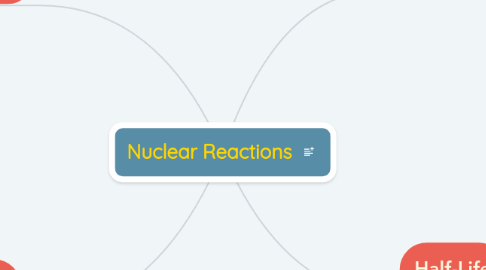Nuclear Reactions
by Denise Genato


1. Nuclear Fusion
1.1. It is the joining together of two light nuclei to form a larger nucleus.
1.2. Nuclear fission takes place when a large, somewhat unstable isotope (atoms with the same number of protons but different number of neutrons) is bombarded by high-speed particles, usually neutrons. These neutrons are accelerated and then slammed into the unstable isotope, causing it to fission, or break into smaller particles.
2. Nuclear Fission
2.1. It is the splitting part of a heavy nucleus into a lighter nuclei and neutrons.
2.2. Fusion takes place when two low-mass isotopes, typically isotopes of hydrogen, unite under conditions of extreme pressure and temperature.
3. Radioactive Decay
3.1. The process by which an unstable radioactive nucleus emits radiation forming a nucleus of new composition.
3.2. When the nucleus of an atom possesses either too many or too few neutrons compared to the number of protons it becomes unstable. These are called radioactive isotopes. Unstable nuclei split up in a process called radioactive decay and emit radioactive radiation.
3.2.1. Alpha Decay
3.2.2. Beta Decay
3.2.3. Positron Emission
3.2.4. Gamma Emission

